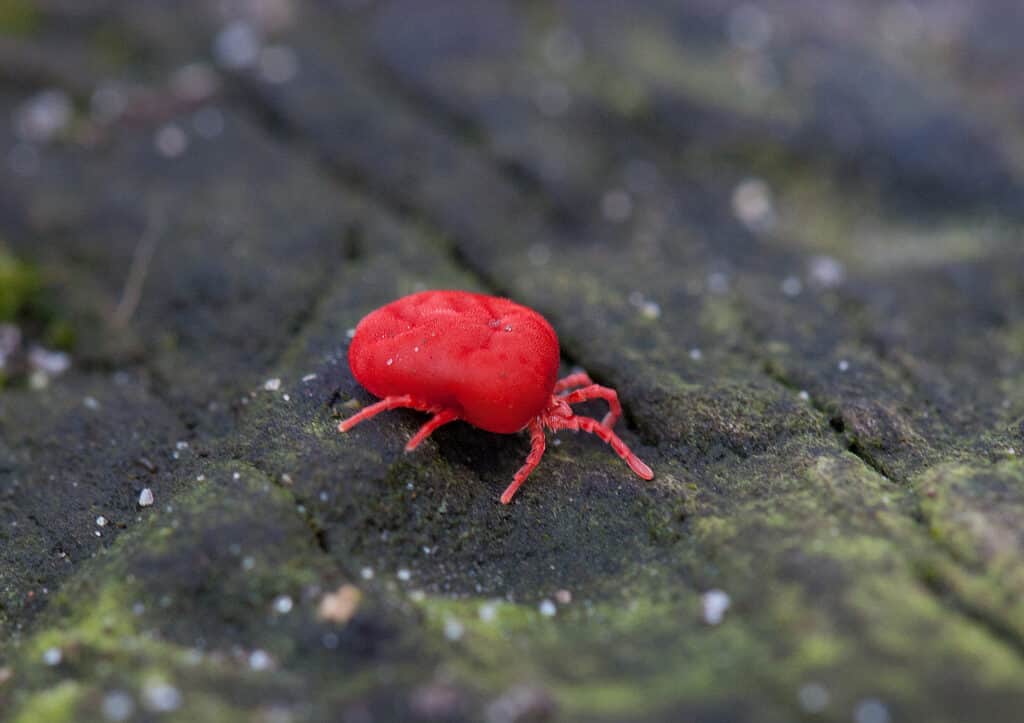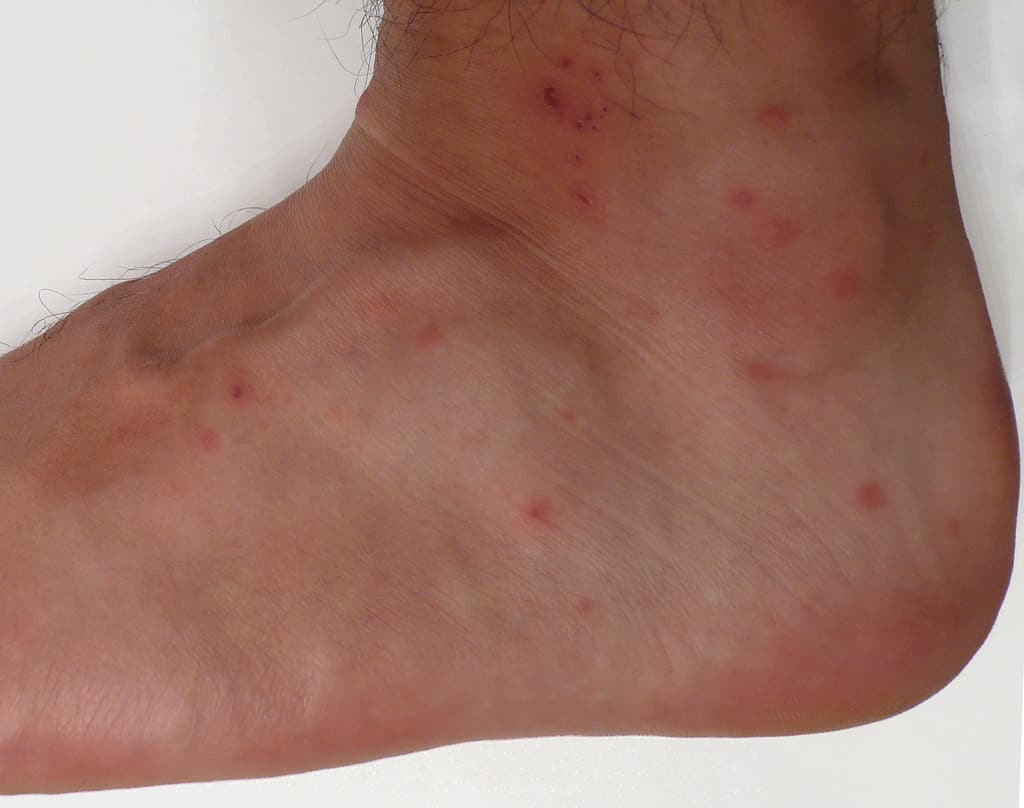During the spring and summer, you might notice an increase in bug populations inside and outside your home. While higher populations are normal during warmer weather, you may not appreciate their presence inside your home. Or maybe you were outside and came home to find unusual bites on your skin. Mites are arthropods that are closely related to ticks and spiders. And chiggers are a type of immature mite. Discover all there is to know about clover mites vs. chiggers, including their appearance, habitats, and how they affect humans.
Clover Mites Vs. Chiggers: a Comparison
| Comparison | Clover Mites | Chiggers |
|---|---|---|
| Taxonomy | Bryobia praetiosa | Trombiculidae and Leeuwenhoekiidae mites |
| Diet | Nutrients from vegetation | Liquified skin tissue, decaying organic matter |
| Size | 0.75 mm, look like red specks | 1/150 of an inch, mostly invisible to the naked eye |
| Habitat | Full sun vegetation near exterior walls | Shaded and damp vegetation in the wild |
| Lifespan | Two to three weeks | 50 to 70 days |
| Body | Eight legs, red or green color | Eight legs, red or yellow color |
| Bites | Do not bite | Leave red pimple-like bumps that cause severe itching |
| Spread Disease? | No | Scrub typhus |
How Can You Tell the Difference Between Clover Mites and Chiggers? 4 Key Differences

Chiggers are naked to the human eye unless they are in groups.
©Matauw/Shutterstock.com
The four key differences between clover mites and chiggers are their appearance, diet, habitat, and bites. Clover mites appear like red specks, feed off vegetation, live in full sun, and do not bite. While chiggers are naked to the human eye, live in shaded, damp areas, and leave red, itchy bumps. Let’s discuss this further.
Clover Mites Vs. Chiggers: Appearance
Clover mites are larger than other mites, growing around 0.75 mm long. They can be either red or green and feature featherlike scales. However, it is difficult to see much detail as they only look like red specks to the naked eye.
Chiggers are the larval stage of different mite species. They have eight legs like all mites, and they can be either red or yellowish. Chiggers are less than 1/150 of an inch, meaning they are almost impossible to see with the naked eye. In most cases, you would need a magnifying glass. But you might spot them when they are in groups.
Clover Mites Vs. Chiggers: Diet
Clover mites are plant feeders that suck nutrients out of vegetation, such as grasses, clovers, trees, and shrubs. They feed off over 200 different plant species, including certain flowers. As their name suggests, clover is their favorite food.
Chiggers feed on soft skin tissue. Contrary to what some believe, chiggers don’t drink blood like mosquitos and ticks. Instead, they use claws near their mouths to attach to animal or human skin. And then, they use their sharp mouthparts to cut the skin and inject a skin-digesting enzyme. After the cells around the bite harden, the chigger sucks up the liquified tissue. They can feed on one host for several hours before falling off. Chiggers can also eat decaying organic matter found in soil.

Clover mites live in full-sun vegetation, often near exterior walls.
©Nik Bruining/Shutterstock.com
Clover Mites Vs. Chiggers: Habitat
The clover mite lives across most of the United States, inhabiting areas with full sun and vegetation. You will often find them in your lawns, gardens, and on the outside of your house. They like to hide in grass that brushes against exterior walls. But you can also find them under bark, near windows, and in cracks and crevices. They can also find their way inside, where they gravitate toward window frames.
Chiggers also live in vegetated areas, like forests, damp woods, fields, meadows, and any grassy area. But they prefer shaded and damp areas. You can often find them in leaf litter, damp soil, pine straw, mulch, woodchip piles, and any shaded overgrown area.
Clover Mites Vs. Chiggers: Bites
Clover mites do not bite humans or cause any health problems. However, they can get into your home and infest areas like windowsills. And they can leave red stains on furniture and walls when smooshed. It’s possible for some people to have mild allergies to these mites.
Chiggers, on the other hand, do bite people. They often target areas around your ankles, waist, and other skin folds. And they can cause red hive-like bumps and severe itching. They often appear in a line near the seams of tight-fitting clothing. Chiggers can spread scrub typhus, which is a bacterial disease that causes fever, rashes, body aches, and headaches.
What Happens if a Clover Mite Bites You?

Chigger bites cause extremely itchy red bumps.
©TimVickers, Public domain, via Wikimedia Commons – License
Clover mites actually do not bite. But they can be a nuisance when they get inside your home. You might notice red stains after you smash one. And they can infest areas around windows, drapery, and carpets.
What Do Mite Bites Look Like on Human Skin?
While clover mites don’t bite, chiggers can leave behind extremely itchy bumps. Other mite species can bite and leave red, small bumps on the skin that are itchy, painful, and inflamed. Chigger bites are often found in lines around the seam of tight-fitting clothes. You often get them in clusters, and the itching can be intense.
Can Clover Mites Get in Your Bed?
Clover mites are not typically found near beds. Instead, they like to hang out near window frames and walls around windows. If you find red streaks in your sheets that look like a crushed mite, it may be bed bugs.
The photo featured at the top of this post is © iStock.com/dna_beeb
Thank you for reading! Have some feedback for us? Contact the AZ Animals editorial team.






